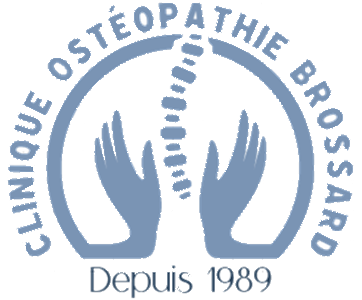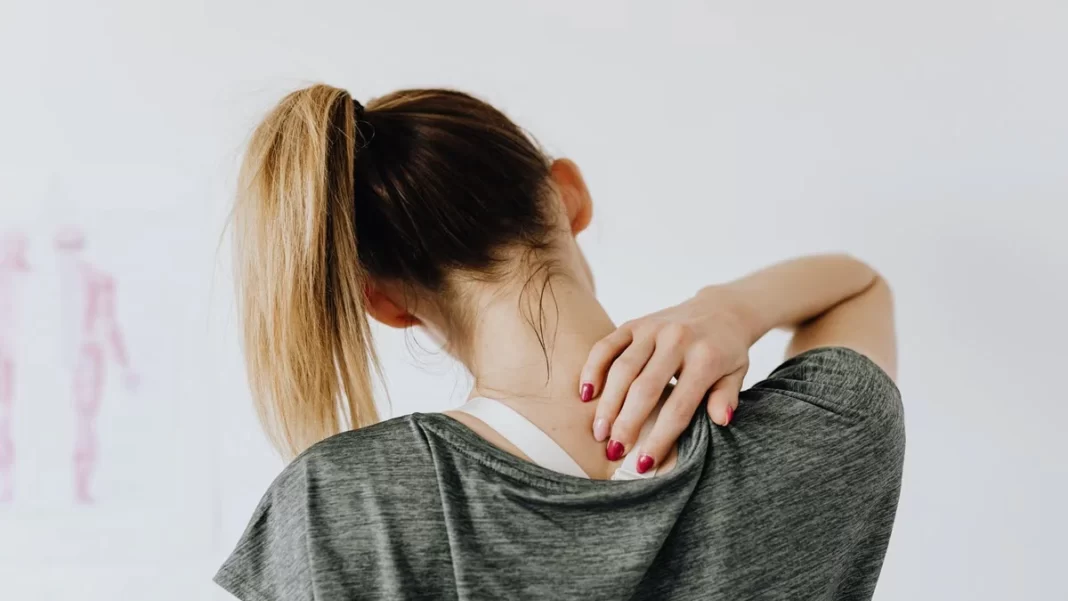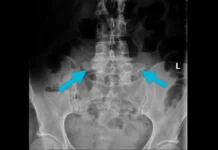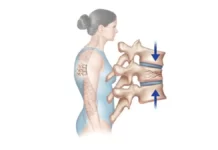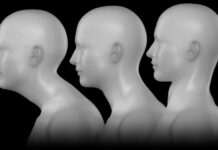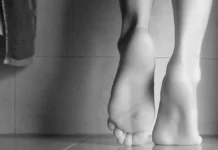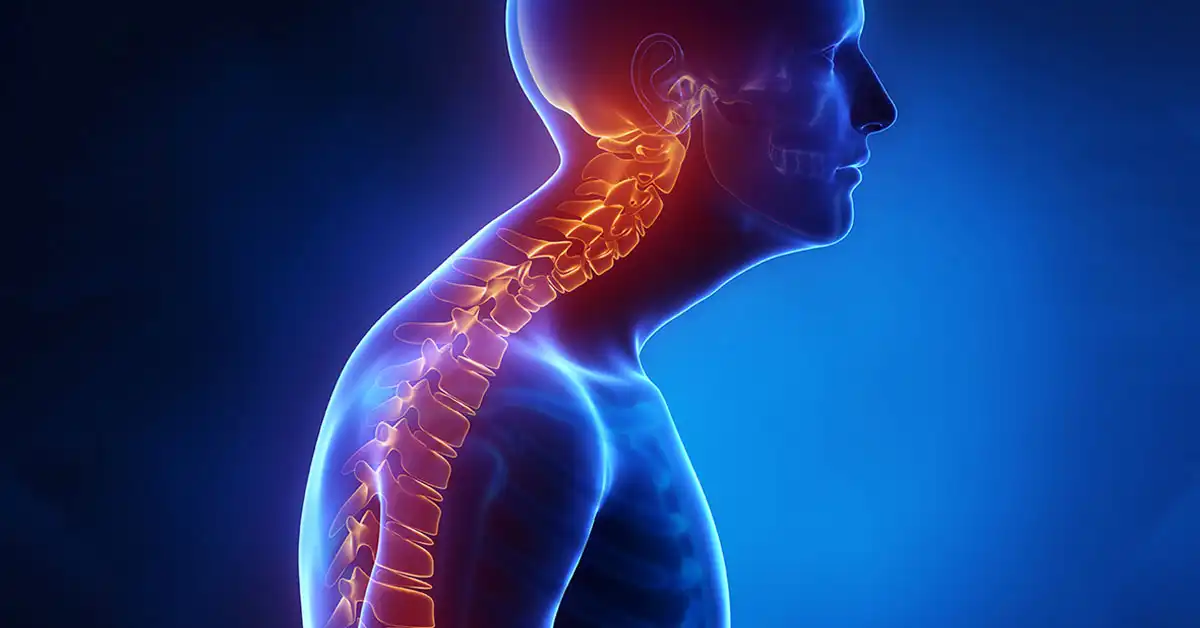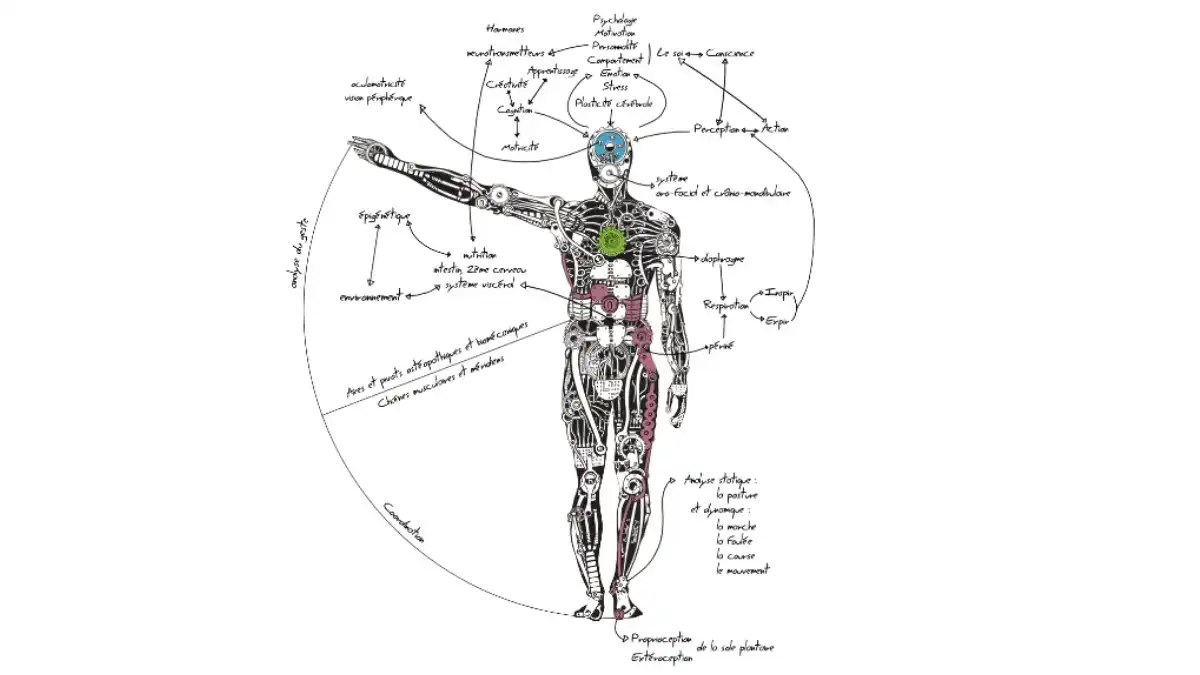Introduction
Rhomboid pain is a common yet often overlooked musculoskeletal issue that affects many individuals. The rhomboid muscles, located in the upper back between the spine and the shoulder blades, play a crucial role in shoulder movement and posture. When these muscles become strained, overused, or tense, they can lead to discomfort ranging from mild soreness to severe pain that hinders daily activities. Despite its prevalence, rhomboid pain is frequently misdiagnosed or confused with other types of upper back pain, such as issues stemming from the spine or surrounding muscle groups. Understanding the origins and management of rhomboid pain is essential for effective treatment and prevention.
Rhomboid pain often manifests as a dull ache or sharp discomfort between the shoulder blades, accompanied by stiffness or restricted mobility in the upper back. It can arise due to various factors, including poor posture, repetitive strain from physical activities, or stress-induced muscle tension. Modern lifestyles, characterized by prolonged periods of sitting and working on computers or mobile devices, have contributed to an increased incidence of rhomboid pain. Left untreated, this condition can worsen over time, potentially leading to chronic discomfort and impacting overall quality of life.
Understanding rhomboid pain goes beyond addressing localized discomfort—it sheds light on the broader importance of muscle-related pain in maintaining physical health and well-being. The musculoskeletal system is intricately connected, and issues in one area often lead to compensatory strain in others. For example, tight or overworked rhomboid muscles can contribute to shoulder dysfunction, neck pain, or even headaches. By identifying and addressing rhomboid pain early, individuals can prevent these cascading effects and restore balance to their musculoskeletal system.
From an osteopathic perspective, rhomboid pain serves as a reminder of the body’s interconnectedness and the need for a holistic approach to health. Osteopathy emphasizes the importance of understanding the root cause of musculoskeletal pain rather than merely treating symptoms. This approach is particularly relevant for rhomboid pain, as the underlying factors often include posture imbalances, lifestyle habits, or stress-related tension. By addressing these contributors, individuals can achieve lasting relief and reduce the likelihood of recurrence.
Anatomy of the Rhomboid Muscles
The rhomboid muscles, often referred to simply as the rhomboids, are a pair of deep skeletal muscles located in the upper back. They play a pivotal role in maintaining proper posture, stabilizing the shoulder blades, and facilitating various upper-body movements. Understanding their location, structure, and function provides valuable insight into their importance in overall musculoskeletal health and why issues such as rhomboid pain can significantly impact daily life.
Location and Structure of the Rhomboid Muscles
The rhomboid muscles are divided into two distinct parts: the rhomboid major and the rhomboid minor. Despite their separate classification, they work together as a functional unit to support the upper back and shoulders.
- Rhomboid Minor: This smaller, rectangular muscle lies superior to the rhomboid major. It originates from the nuchal ligament and the spinous processes of C7 and T1 vertebrae in the lower neck and upper thoracic region. It inserts at the medial border of the scapula, near the scapular spine.
- Rhomboid Major: Located below the rhomboid minor, this larger muscle originates from the spinous processes of T2 to T5 vertebrae in the mid-thoracic region. It also inserts along the medial border of the scapula, but slightly below the rhomboid minor’s insertion point.
The rhomboids are deep muscles, situated beneath the trapezius muscle, making them less visible but no less critical in function. They are innervated by the dorsal scapular nerve (arising from the C5 nerve root) and receive their blood supply from the dorsal scapular artery. Their positioning and structure enable them to serve as key stabilizers and movers of the scapula, also known as the shoulder blade.
Role in Upper Back and Shoulder Movement
The rhomboid muscles play an essential role in the movement and stability of the upper back and shoulders. Their primary functions include scapular retraction, rotation, and elevation. These actions are crucial for a wide range of upper-body activities and maintaining overall posture.
- Scapular Retraction (Adduction): One of the most important roles of the rhomboid muscles is to pull the scapulae medially (toward the spine). This movement is known as scapular retraction or adduction. It is essential for maintaining an upright posture and preventing the shoulders from rounding forward, a common issue in individuals who spend long hours sitting or using electronic devices.
- Scapular Elevation: The rhomboids assist in lifting the scapulae upward, which is necessary for activities such as shrugging the shoulders or stabilizing the shoulder blades during overhead movements.
- Scapular Rotation: The rhomboids also play a role in downward rotation of the scapula. This movement is essential for lowering the arms or preparing the shoulder for activities such as pulling or lifting objects. Downward rotation is a coordinated action that balances the forces between the rhomboids, trapezius, and other surrounding muscles.
- Postural Support: The rhomboid muscles are fundamental in maintaining proper alignment of the scapulae against the rib cage. By stabilizing the shoulder blades, they help distribute mechanical forces evenly across the back, reducing strain on other muscles and joints. This stabilization is critical for preventing postural imbalances, such as kyphosis (excessive rounding of the upper back), and for enabling smooth, coordinated arm and shoulder movements.
- Support in Shoulder Movements: The rhomboids provide a stable base for other muscles, such as the rotator cuff and deltoid muscles, to execute precise shoulder movements. For example, during activities like throwing, pulling, or pushing, the rhomboids work in conjunction with other muscles to ensure proper mechanics and reduce the risk of injury.
Clinical Relevance
Dysfunction or strain in the rhomboid muscles can result in pain, tightness, or a “knotted” feeling in the upper back. Poor posture, overuse from repetitive movements, or sudden trauma are common causes of rhomboid issues. When the rhomboids are weak or tight, compensatory strain can occur in other areas, such as the neck, shoulders, or lower back, further highlighting their importance.
From an osteopathic perspective, ensuring the health of the rhomboid muscles is crucial for overall musculoskeletal well-being. Techniques such as myofascial release, soft tissue therapy, and targeted exercises can help address dysfunction in the rhomboids, restoring balance and function.
Common Causes of Rhomboid Pain
Rhomboid pain is a common musculoskeletal complaint that can significantly impact daily life. This discomfort, typically felt between the shoulder blades, often stems from issues that disrupt the normal functioning of the rhomboid muscles, which play a key role in stabilizing the upper back and shoulders. Understanding the causes of rhomboid pain is essential for effective prevention and management. Below are the most common contributors to rhomboid pain: poor posture, muscle strain or overuse, stress and tension, and underlying medical conditions such as arthritis or herniated discs.
1. Poor Posture
Poor posture is one of the leading causes of rhomboid pain in modern lifestyles. Many individuals spend long hours sitting at desks, working on computers, or looking down at their phones. These prolonged positions can cause the shoulders to round forward, a condition known as forward head posture or text neck, which puts strain on the rhomboid muscles.
- How It Happens: When the shoulders round forward, the rhomboids are stretched and weakened over time. This leads to muscle imbalance, as other muscles, like the chest and neck muscles, become tight. The constant tension on the rhomboids causes pain and may even lead to chronic discomfort if not corrected.
- Activities That Worsen Poor Posture:
- Sitting for long periods without proper back support.
- Looking at screens at improper eye level.
- Carrying heavy bags or purses on one shoulder.
- Consequences: Poor posture not only affects the rhomboids but also creates compensatory strain in surrounding areas, such as the neck, shoulders, and lower back, leading to a cycle of discomfort.
2. Muscle Strain or Overuse
Muscle strain or overuse is another common cause of rhomboid pain. The rhomboids are engaged during many upper-body activities, and excessive or repetitive use can cause them to become strained, tight, or even injured.
- How It Happens: Overuse occurs when the muscles are subjected to repetitive movements or heavy loads without adequate recovery. Strain, on the other hand, often results from sudden movements, improper lifting techniques, or overexertion during exercise.
- Examples of Activities Causing Strain or Overuse:
- Weightlifting with poor form, especially exercises involving pulling motions (e.g., rows or pull-ups).
- Sports that require repetitive upper-body movements, such as tennis, swimming, or rowing.
- Improper or excessive carrying of heavy loads, such as backpacks or grocery bags.
- Symptoms: Strained or overused rhomboids often feel tight or sore, with a sensation of knots or trigger points. The pain may worsen during certain arm or shoulder movements, making daily activities challenging.
3. Stress and Tension
Stress and tension, though often overlooked, are significant contributors to rhomboid pain. Emotional stress can manifest physically, leading to muscle tension in the upper back, shoulders, and neck.
- How It Happens: During periods of stress, individuals tend to hunch their shoulders or adopt tense postures unconsciously. This sustained tension places a strain on the rhomboid muscles, causing pain and stiffness.
- Physical Manifestations of Stress:
- Tightness or spasms in the upper back and shoulders.
- Restricted range of motion in the upper body.
- Generalized discomfort or a “heavy” sensation in the upper back.
- Chronic Effects: Prolonged stress can lead to persistent muscle tightness and trigger points in the rhomboids, resulting in recurring or chronic pain that requires targeted intervention.
4. Underlying Medical Conditions
Certain underlying medical conditions can contribute to rhomboid pain by either directly affecting the muscles or placing undue strain on the surrounding structures.
- Common Medical Causes:
- Arthritis: Osteoarthritis or rheumatoid arthritis in the spine or shoulder joints can cause referred pain in the rhomboid area. Inflammation in the joints may lead to stiffness and discomfort that radiates to the muscles.
- Herniated Discs: A herniated disc in the cervical or upper thoracic spine can compress nerves that innervate the rhomboid muscles, causing referred pain and muscle dysfunction.
- Myofascial Pain Syndrome: This chronic condition involves trigger points in the muscles, which can cause localized pain in the rhomboids and surrounding areas.
- Spinal Misalignments: Conditions like scoliosis or kyphosis can place uneven strain on the rhomboids, causing pain and fatigue over time.
- Signs of Underlying Conditions:
- Pain that persists despite rest and treatment.
- Numbness, tingling, or weakness in the arms or shoulders, indicating nerve involvement.
- Difficulty with movement or a noticeable deformity in the spine or posture.
Symptoms of Rhomboid Pain
Rhomboid pain is a common issue that manifests as discomfort in the upper back, specifically between the shoulder blades. This condition can range from mild soreness to severe pain that disrupts daily activities. Identifying the symptoms of rhomboid pain and understanding how it differs from other types of back pain is essential for effective diagnosis and treatment. This section will focus on the common signs, how to differentiate rhomboid pain from other back-related issues, and how medical professionals diagnose the condition.
Identifying the Common Signs
The symptoms of rhomboid pain can vary depending on the severity and underlying cause. However, the following are the most frequently reported signs:
- Localized Pain Between the Shoulder Blades:
- The hallmark symptom of rhomboid pain is discomfort between the spine and the shoulder blades, often described as a dull ache or sharp pain. It can occur on one or both sides of the back.
- The pain may intensify with certain movements, such as pulling, lifting, or reaching overhead.
- Tightness or Stiffness:
- Individuals often experience a sensation of tightness in the upper back, which can limit their range of motion. The muscles may feel stiff, especially after prolonged sitting or upon waking.
- Pain During Specific Movements:
- Activities like twisting the torso, pulling the shoulders back, or moving the arms can aggravate the pain. Stretching the rhomboid muscles often highlights their sensitivity.
- Trigger Points or Knots:
- People with rhomboid pain may feel palpable “knots” or tight bands in the muscles. These trigger points can be tender to the touch and may radiate pain to other areas.
- Referred Pain:
- While the pain is typically localized, some individuals report referred pain radiating to the neck, shoulders, or even the chest.
- Burning or Tingling Sensation:
- In cases where a nerve is involved, individuals may experience a burning or tingling sensation along the upper back, although this is less common.
Differentiating Rhomboid Pain from Other Back Pain
Rhomboid pain is often mistaken for other types of upper back pain, making it important to understand its unique characteristics. Below are some comparisons:
- Rhomboid Pain vs. Trapezius Pain:
- Trapezius pain is typically felt higher on the shoulders and neck, while rhomboid pain is centered between the shoulder blades.
- Trapezius pain may also radiate to the base of the skull or shoulders, unlike rhomboid pain, which is more localized.
- Rhomboid Pain vs. Spinal Pain:
- Pain originating from the spine, such as that caused by herniated discs or arthritis, is often accompanied by neurological symptoms like numbness or tingling in the arms or hands.
- Rhomboid pain, on the other hand, is muscular and does not typically involve nerve compression.
- Rhomboid Pain vs. Cardiac-Related Pain:
- Chest pain from a heart condition may radiate to the upper back, leading to confusion with rhomboid pain. However, cardiac pain is usually associated with symptoms like shortness of breath, dizziness, or sweating, which are absent in rhomboid pain.
- Rhomboid Pain vs. Myofascial Pain Syndrome:
- While myofascial pain can involve the rhomboids, it typically presents with widespread muscle pain and multiple trigger points in various areas of the body.

Treatment Options for Rhomboid Pain
Rhomboid pain can often be managed effectively with a combination of at-home remedies, targeted exercises, and professional care. Whether caused by muscle strain, poor posture, or stress, the right treatment plan can alleviate pain, promote healing, and prevent recurrence. Below is a comprehensive overview of the most effective treatment options, including at-home remedies, stretching, heat and cold therapy, osteopathic treatments, manual therapy, and postural corrections.
At-Home Remedies
For mild to moderate rhomboid pain, at-home remedies can be highly effective in managing symptoms and promoting recovery. These simple strategies help reduce muscle tension, inflammation, and discomfort.
- Rest: Avoid activities that strain the rhomboid muscles, such as heavy lifting or repetitive pulling, to give the muscles time to heal.
- Self-Massage: Using tools like a foam roller or tennis ball to apply gentle pressure to the rhomboid area can help release tension and improve circulation.
- Topical Analgesics: Over-the-counter creams or gels containing menthol or capsaicin can provide temporary relief by soothing the muscle.
At-home remedies are often the first step in addressing rhomboid pain and can be combined with other approaches for more comprehensive relief.
Stretching and Exercises
Stretching and strengthening exercises are essential for alleviating rhomboid pain and preventing future issues. These activities target muscle tightness and improve flexibility, reducing strain on the rhomboids.
- Effective Stretches:
- Child’s Pose: This yoga pose gently stretches the rhomboids and upper back.
- Cross-Body Shoulder Stretch: Pull one arm across your chest and hold with the opposite hand to stretch the rhomboids.
- Cat-Cow Stretch: Alternating between arching and rounding the back helps release tension in the rhomboid area.
- Strengthening Exercises:
- Scapular Retraction: Squeeze your shoulder blades together while sitting or standing upright.
- Rows: Using resistance bands or weights, perform rows to strengthen the rhomboids and surrounding muscles.
- Reverse Flys: This exercise targets the upper back and helps build resilience in the rhomboids.
Performing these exercises regularly improves the muscle’s ability to handle stress and prevents future pain episodes.
Heat and Cold Therapy
Heat and cold therapy are simple yet effective treatments for rhomboid pain. They can be used independently or alternated to manage pain and inflammation.
- Heat Therapy:
- Applying a heating pad or warm compress to the affected area increases blood flow, relaxes tight muscles, and reduces stiffness.
- Heat therapy is especially effective for chronic pain or tension caused by stress.
- Cold Therapy:
- Ice packs or cold compresses help reduce inflammation and numb acute pain after an injury or strain.
- Apply cold therapy within the first 48 hours of experiencing pain for the best results.
Alternating between heat and cold therapy can provide comprehensive relief, addressing both inflammation and muscle tension.
Osteopathic Treatments
Osteopathic care offers a holistic approach to treating rhomboid pain by addressing the root causes and promoting the body’s natural healing processes. Osteopaths use a combination of techniques to alleviate pain and improve function.
- Myofascial Release: Gentle, hands-on techniques are used to release tension in the fascia (connective tissue) surrounding the rhomboid muscles.
- Joint Mobilization: Adjustments to the spine and shoulders may be performed to ensure proper alignment, reducing strain on the rhomboids.
- Lifestyle Recommendations: Osteopaths often provide advice on posture, ergonomics, and stress management to support long-term recovery.
Osteopathy is particularly beneficial for individuals with chronic rhomboid pain or underlying conditions contributing to muscle strain.
Manual Therapy
Manual therapy, often performed by physical therapists or chiropractors, focuses on manipulating the muscles and joints to reduce pain and improve mobility.
- Trigger Point Therapy: Direct pressure is applied to trigger points or “knots” in the rhomboid muscles to relieve tension and restore function.
- Massage Therapy: Professional massage helps increase blood flow, reduce muscle tightness, and promote relaxation in the upper back.
- Soft Tissue Mobilization: Techniques like kneading and stretching the muscles can address adhesions and improve range of motion.
Manual therapy is particularly effective for individuals with persistent muscle tightness or recurring rhomboid pain.
Postural Corrections
Postural imbalances are a leading cause of rhomboid pain, making postural corrections a critical aspect of treatment. Poor posture can overstretch the rhomboid muscles, causing strain and discomfort.
- Ergonomic Adjustments:
- Ensure that your workstation is set up correctly, with your computer monitor at eye level and your chair providing adequate back support.
- Sit on a chair (maybe done standing)
- Extend your arms out in front of your body.
- Gently stretch so you can feel your shoulder blades pull apart.
- Gently tilt your head forward.
- Hold for 15 to 30 seconds.
- Repeat 2-4 times.

Arm in front
- Bring the arm in front of the body as shown.
- Hold the elbow with the opposite arm.
- Gently pull on the chest until a stretch is felt in the back of the shoulder.
- Repeat with the other arm

Cat-Cow The diamonds stretch out
Cat Cow, or Chakravakasana, is a yoga pose believed to improve posture and balance, ideal for people with back pain.
- Start on your hands and knees in a tabletop pose, with a neutral spine. As you inhale and switch to cow pose, lift the bones in your seat upward, press your chest forward, and let your belly sink down.
- Lift your head, relax your shoulders away from your ears, and look straight ahead.
- As you exhale, adopt a cat pose while rounding your spine outward, tucking your tailbone, and pulling your pubic bone forward.
- Release your head back to the floor, but don’t force your chin to your chest. Most importantly, relax.
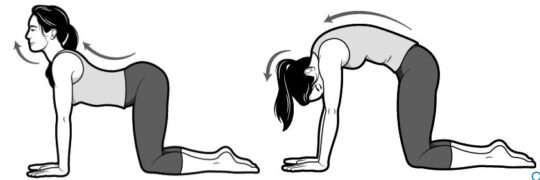
Prevention Tips for Rhomboid Pain
Preventing rhomboid pain is crucial to maintaining a healthy and functional upper back. Rhomboid muscles are essential for stabilizing the shoulder blades and supporting proper posture, so neglecting their health can lead to pain, discomfort, and long-term musculoskeletal issues. The most effective strategies for prevention include maintaining proper posture, strengthening the upper back muscles, and making ergonomic adjustments to daily activities. By incorporating these habits into your routine, you can significantly reduce the risk of rhomboid pain and improve overall upper body health.
Maintaining Proper Posture
Proper posture is the cornerstone of preventing rhomboid pain. Poor posture, such as slouching or rounding the shoulders, places excessive strain on the rhomboid muscles, leading to tension and discomfort. Maintaining an aligned and balanced posture reduces the workload on the rhomboids and ensures that the upper back muscles function efficiently.
- Key Posture Principles:
- Neutral Spine: Keep your spine in a neutral position, with the natural curves of your back preserved. Avoid excessive rounding or arching.
- Shoulder Position: Keep your shoulders back and down, avoiding a forward hunch or shrugging.
- Head Alignment: Your head should remain aligned with your shoulders, avoiding forward head posture where the neck juts out.
- Postural Awareness:
- Regularly check your posture throughout the day, especially during prolonged periods of sitting or standing.
- Use reminders, such as sticky notes or posture apps, to cue yourself to adjust your position.
- Benefits:
- Proper posture not only prevents rhomboid pain but also reduces strain on the neck, shoulders, and lower back.
- It improves breathing efficiency and promotes better overall health.
Strengthening Upper Back Muscles
Strong upper back muscles, including the rhomboids, are better equipped to handle the demands of daily activities and prevent injury. Strengthening exercises not only reduce the risk of strain but also improve posture by creating a stable foundation for the shoulders and spine.
- Key Exercises:
- Scapular Retraction: Sit or stand upright, squeeze your shoulder blades together, and hold for a few seconds before releasing. This simple exercise strengthens the rhomboids and improves scapular stability.
- Rows: Use resistance bands, dumbbells, or a rowing machine to perform rows. This movement targets the rhomboids and other upper back muscles.
- Reverse Flys: Hold light weights and raise your arms out to the sides while bending forward slightly. This exercise isolates and strengthens the rhomboids and posterior shoulder muscles.
- Wall Angels: Stand with your back against a wall and slowly move your arms up and down in a “snow angel” motion, keeping your shoulders and arms in contact with the wall. This strengthens the upper back and promotes good posture.
- Stretching for Flexibility:
- Incorporate stretches like the child’s pose or a cross-body shoulder stretch to keep the rhomboid muscles flexible and prevent tightness.
- Consistency is Key:
- Perform strengthening exercises at least 2–3 times a week as part of your workout routine.
- Gradually increase intensity to build resilience without overloading the muscles.
Ergonomic Adjustments for Daily Activities
Making ergonomic adjustments to your daily routine is an effective way to prevent rhomboid pain caused by repetitive strain or poor posture during activities. Whether you’re working at a desk, driving, or performing household chores, small adjustments can make a significant difference.
- Workstation Setup:
- Adjust your chair so your feet rest flat on the floor and your knees are at a 90-degree angle.
- Ensure your computer monitor is at eye level to avoid craning your neck forward.
- Use a keyboard and mouse positioned close to your body to reduce shoulder strain.
- Driving Posture:
- Adjust your seat so you sit upright with your back supported and your shoulders relaxed.
- Position the steering wheel so your arms are slightly bent and avoid overreaching.
- Carrying Loads:
- Use a backpack with padded straps instead of a single-shoulder bag to evenly distribute weight.
- Avoid carrying heavy items in one hand, as this creates imbalances and strains the rhomboid muscles.
- Daily Movement Habits:
- Take regular breaks to stand, stretch, and move around during long periods of sitting.
- Avoid slouching while using phones or tablets. Hold devices at eye level to prevent forward head posture and shoulder rounding.
- Ergonomic Tools:
- Use a lumbar support cushion or posture brace if necessary to encourage proper alignment.
- Consider using a standing desk or an adjustable desk that allows you to alternate between sitting and standing.
Benefits of Prevention Strategies
By focusing on posture, strength, and ergonomics, you can:
- Reduce the likelihood of developing rhomboid pain and associated discomfort.
- Improve upper back strength and flexibility, supporting better overall function.
- Enhance your quality of life by reducing musculoskeletal strain and promoting healthy movement patterns.
Role of Osteopathy in Managing Rhomboid Pain
Osteopathy is a holistic approach to healthcare that focuses on the musculoskeletal system and its role in overall well-being. When it comes to managing rhomboid pain, osteopathy offers effective, non-invasive treatments that address not only the symptoms but also the underlying causes of the condition. By restoring balance, improving mobility, and promoting the body’s natural healing mechanisms, osteopathic care can provide long-lasting relief for individuals suffering from rhomboid pain. This article explores the benefits of osteopathic care and the specific techniques osteopaths use to treat rhomboid pain.
Techniques Used by Osteopaths
Osteopaths employ a range of techniques to treat rhomboid pain, each designed to target specific aspects of the condition. These techniques are gentle, safe, and effective, aiming to restore balance and functionality to the musculoskeletal system. Here are the most common techniques used:
1. Soft Tissue Manipulation
Soft tissue techniques involve gentle pressure and stretching applied to the muscles, tendons, and ligaments surrounding the rhomboid area.
- Purpose:
- Relieve muscle tension and tightness.
- Increase blood flow to promote healing.
- Reduce the sensation of knots or trigger points in the rhomboids.
- How It Works:
- The osteopath uses their hands to massage and stretch the soft tissues, focusing on areas of tension or tenderness. This helps improve muscle flexibility and reduces discomfort.
2. Myofascial Release
Myofascial release is a specialized technique targeting the fascia, a connective tissue layer that surrounds muscles. Tight fascia can contribute to rhomboid pain by restricting movement and causing muscle tension.
- Purpose:
- Release restrictions in the fascia.
- Improve muscle mobility and reduce stiffness.
- How It Works:
- The osteopath applies sustained pressure to the fascia in specific areas, allowing it to stretch and loosen. This technique is particularly effective for chronic rhomboid pain caused by overuse or postural issues.
3. Spinal and Joint Mobilization
Rhomboid pain is often linked to misalignments or restricted mobility in the spine and shoulder joints. Osteopaths use mobilization techniques to restore proper alignment and movement.
- Purpose:
- Correct spinal misalignments that place strain on the rhomboids.
- Enhance joint mobility and reduce compensatory muscle tension.
- How It Works:
- The osteopath uses gentle movements to manipulate the spine and joints, ensuring that they are correctly aligned. This not only alleviates pain but also improves overall posture.
4. Muscle Energy Techniques (MET)
Muscle energy techniques involve using the patient’s own muscle contractions to improve flexibility and release tension in the rhomboid muscles.
- Purpose:
- Stretch and strengthen the rhomboids.
- Relieve tightness and improve muscle function.
- How It Works:
- The osteopath guides the patient through a series of controlled movements where the muscles contract against resistance. This helps lengthen tight muscles and restore balance to the affected area.
5. Postural Education
Since poor posture is a leading cause of rhomboid pain, osteopaths place significant emphasis on postural education and ergonomic advice.
- Purpose:
- Teach the patient how to maintain proper posture during daily activities.
- Prevent recurrence of rhomboid pain by reducing strain on the upper back.
- How It Works:
- The osteopath observes the patient’s posture and provides recommendations for adjustments. This may include exercises to strengthen postural muscles, tips for setting up an ergonomic workspace, or guidance on maintaining proper alignment during activities like lifting or sitting.
6. Trigger Point Therapy
Trigger points, or “knots,” in the rhomboid muscles can cause localized pain and tension. Osteopaths use trigger point therapy to alleviate these areas of discomfort.
- Purpose:
- Reduce pain and tension in specific areas of the rhomboids.
- Improve overall muscle function.
- How It Works:
- The osteopath applies focused pressure to the trigger points using their fingers or tools. This helps release the tightness and restore normal muscle tone.
FAQs: Frequently Asked Questions About Rhomboid Pain
1. What is rhomboid pain?
Rhomboid pain refers to discomfort, soreness, or tension in the rhomboid muscles located between the shoulder blades and spine. These muscles play a crucial role in stabilizing the shoulder blades and enabling movements of the upper back and shoulders. Pain in this area can range from a mild ache to sharp discomfort, often triggered by muscle strain, poor posture, or stress.
2. What causes rhomboid pain?
The most common causes of rhomboid pain include:
- Poor Posture: Prolonged slouching or forward head posture overstretches and weakens the rhomboid muscles.
- Muscle Strain or Overuse: Repetitive pulling or lifting motions, heavy lifting, or sudden, awkward movements can strain the rhomboids.
- Stress and Tension: Emotional or physical stress often causes muscle tightness, particularly in the upper back and shoulders.
- Underlying Conditions: Medical issues such as arthritis, herniated discs, or myofascial pain syndrome can also contribute to rhomboid discomfort.
3. How do I know if my pain is from the rhomboid muscles?
Rhomboid pain typically presents as:
- A dull ache or sharp pain between the shoulder blades.
- Tightness, stiffness, or a “knot” sensation in the upper back.
- Discomfort that worsens during certain movements, such as pulling the shoulders back, lifting, or twisting. If the pain is localized between the spine and shoulder blades and improves with stretching or heat therapy, it is likely related to the rhomboid muscles.
4. How is rhomboid pain different from other types of back pain?
Rhomboid pain is specific to the upper back, between the shoulder blades, and is muscular in nature. Unlike spinal pain, it does not usually involve nerve symptoms like numbness or tingling in the arms. It is also distinct from trapezius pain, which is located higher on the shoulders and neck. If there are symptoms like radiating pain, weakness, or systemic issues, it may indicate a different condition and should be evaluated by a healthcare provider.
5. What are the best at-home treatments for rhomboid pain?
At-home remedies for rhomboid pain include:
- Stretching: Exercises like the child’s pose, cross-body shoulder stretch, and cat-cow stretch can reduce tension in the rhomboids.
- Heat and Cold Therapy: Heat relaxes tight muscles, while cold reduces inflammation after acute injury.
- Self-Massage: Use a foam roller or tennis ball to release tightness in the upper back.
- Rest: Avoid activities that exacerbate the pain, such as heavy lifting or repetitive pulling motions.
6. When should I see a doctor for rhomboid pain?
Seek medical attention if:
- The pain persists for more than a few weeks despite at-home care.
- You experience numbness, tingling, or weakness in your arms or shoulders, which may indicate nerve involvement.
- The pain is severe, sudden, or accompanied by chest pain, shortness of breath, or other systemic symptoms, as these could indicate a more serious condition.
7. How can I prevent rhomboid pain?
Prevention involves maintaining a healthy posture, strengthening the upper back muscles, and making ergonomic adjustments to daily activities. Some tips include:
- Keeping your shoulders back and spine aligned while sitting or standing.
- Incorporating exercises like scapular retractions, rows, and reverse flys to strengthen the rhomboids.
- Adjusting your workstation to ensure your computer monitor is at eye level and your chair supports your back.
8. Can stress cause rhomboid pain?
Yes, stress can contribute to rhomboid pain. Emotional or physical stress often leads to muscle tension in the upper back, including the rhomboids. Practicing relaxation techniques, such as deep breathing, yoga, or meditation, can help reduce stress-related muscle tightness.
9. How does osteopathy help with rhomboid pain?
Osteopathy is an effective treatment for rhomboid pain because it addresses the underlying causes and restores balance to the musculoskeletal system. Techniques such as soft tissue manipulation, myofascial release, and spinal mobilization relieve tension, improve alignment, and reduce pain. Osteopaths also provide postural education and ergonomic advice to prevent recurrence.
10. How long does it take to recover from rhomboid pain?
The recovery time for rhomboid pain depends on the severity and cause. Mild cases often improve within a few days to a week with rest, stretching, and self-care. Chronic or severe cases, particularly those caused by underlying conditions, may take several weeks or require professional intervention, such as osteopathic treatment or physical therapy.
Conclusion
Rhomboid pain, though often dismissed as a minor inconvenience, can significantly impact daily life and overall well-being if left unaddressed. This article has outlined the key aspects of rhomboid pain, including its causes, symptoms, and effective management strategies, with an emphasis on holistic approaches like osteopathy. Understanding and addressing rhomboid pain early is essential for preventing the progression of discomfort and improving quality of life.
One of the primary takeaways is that rhomboid pain frequently arises from poor posture, muscle strain, stress, or underlying medical conditions. Modern lifestyles, characterized by long hours of sitting, screen usage, and repetitive movements, have made upper back issues more prevalent than ever. Recognizing the early signs of rhomboid pain—such as tightness, localized discomfort, or difficulty with certain shoulder movements—is critical to initiating timely and effective treatment.
Preventive measures, such as maintaining proper posture, strengthening the upper back muscles, and making ergonomic adjustments to daily activities, play a crucial role in reducing the likelihood of rhomboid pain. When pain does occur, a combination of at-home remedies, targeted exercises, and professional care can provide relief. Among these, osteopathy offers a particularly effective approach by addressing both the symptoms and root causes of rhomboid pain. Techniques like soft tissue manipulation, myofascial release, and spinal mobilization not only alleviate discomfort but also promote long-term healing and improved posture.
The importance of early intervention cannot be overstated. Ignoring rhomboid pain or delaying treatment can lead to chronic discomfort, compensatory strain in other areas, and decreased mobility over time. On the other hand, addressing the issue early can prevent escalation and support overall musculoskeletal health. Whether through simple posture corrections, stretching routines, or seeking professional osteopathic care, taking proactive steps ensures a quicker recovery and reduces the risk of recurrence.
References
- WebMD: Offers an overview of rhomboid muscle pain, including causes, symptoms, and treatment strategies. WebMD
- Healthline: Provides detailed insights into rhomboid muscle pain, covering symptoms, causes, and exercises for relief. Healthline
- Medical News Today: Explores rhomboid muscle pain in depth, discussing symptoms, causes, diagnosis, and treatment options. Medical News Today
- Release Muscle Therapy: Focuses on myofascial release techniques for rhomboid muscles, offering practical advice for pain relief. Release Muscle Therapy
- Physiomantra: Discusses rhomboid pain treatment, including effective techniques and exercises to alleviate discomfort. Physiomantra
- Hinge Health: Covers rhomboid muscle pain causes and effective at-home treatments recommended by physical therapists. Hinge Health
- The Manual Therapist: Details positional inhibition techniques for rhomboid muscles, providing pain-free methods for scapula tender points. The Manual Therapist
- Healthy and Natural World: Offers insights into rhomboid muscle pain causes and effective home treatments. Healthy and Natural World
- Doctors Health Press: Explains rhomboid pain causes, symptoms, and treatments, providing a comprehensive understanding of the condition. Doctors Health Press
- Back Intelligence: Provides exercises specifically designed for rhomboid muscle pain relief, focusing on strengthening and stretching techniques. Back Intelligence

